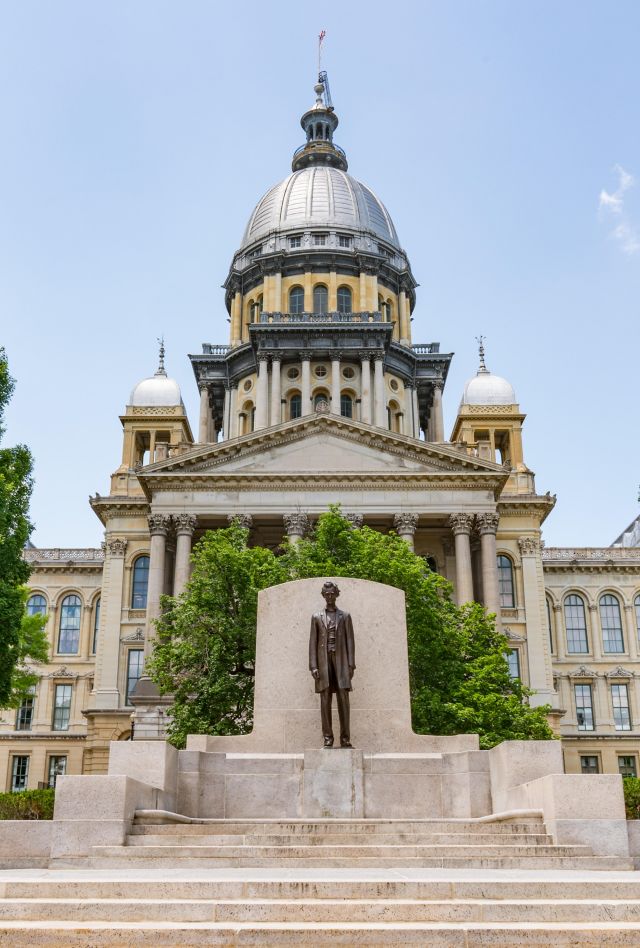NORC Updates Census Undercount of Illinois Residents

This article is from our NORC Now newsletter. Subscribe today.
May 2024
NORC census recount unlocks the door to millions of federal dollars for Illinois and Chicago.
COVID-19 could not have happened at a worse time for the U.S. Census Bureau, which was conducting its 2020 Decennial Census of Population and Housing at the pandemic’s onset. The Decennial Census counts each U.S. resident according to where they live and by sex, age, and race. Its findings determine the number of seats each state has in the U.S. House of Representatives. Census counts also drive federal funding for schools, hospitals, roads, and public works for the subsequent decade.
The Census Bureau invited states and cities to review their 2020 resident counts.
Recognizing that the pandemic and civil unrest in the wake of George Floyd’s murder may have led to significant 2020 Census undercounts—particularly of people living in group quarters (GQ)—the Census Bureau invited Illinois and other states and cities to review 2020 GQ counts via a Post-Census Group Quarters Review (PCGQR) challenge program. GQs include nursing homes, dorms, residential treatment centers, and correctional facilities.
“The City of Chicago approached us first, in 2022, to help it ensure the accuracy of its GQ population count. Learning of our efforts, Illinois Governor J.B. Pritzker’s office asked us to investigate the number of GQ residents statewide. We were honored to have been chosen by both and excited to use our existing capabilities in a new way for immediate real-world application,” said Martha Stapleton, a vice president in NORC's Economics, Justice & Society department.
NORC drew on deep demographic analysis and data collection expertise to identify missing GQs and residents.
In Chicago, we compared 2020 Census data against a state GQ dataset for the city, specifically looking for GQs where the 2020 Census said there were none, scraping the web for information, geocoding and mapping group-living locations, comparing lists and addresses, and contacting and conducting online surveys of GQ administrators. For the state, we collected as many administrative files as possible from relevant state agencies, linking and validating them in order to access necessary information.
We found 5,547 uncounted Chicago residents and 46,400 statewide.
In total, we found that the 2020 Census missed 733 GQs that housed 46,400 Illinois residents that year. Those numbers include 68 missed Chicago GQs that housed 5,547 people. Missing GQs included sizable assisted living, rehabilitation, and long-term care facilities with more than 300 residents each, plus 123 dorms that housed 5,888 residents.
“Correctly counting dorm residents is particularly significant to small college towns whose federal funding relies heavily on student-driven populations, many of which were reduced due to the pandemic,” said Lee Fiorio, a senior research methodologist in NORC’s Methodology & Quantitative Social Sciences department.
Our findings will help lead to an equitable distribution of taxpayer dollars.
Although none of these residents will be added to the official 2020 Census numbers, the Census Bureau has approved both the state’s and Chicago’s requests to add them to future population estimates.
“Our recount provides Illinois, its counties, and localities with the data they need to request a fair share of the $675 billion in annual funds distributed to states each year and to make planning and policymaking more equitable,” Stapleton said.
Our demographic, statistical, and data-science experts look forward to helping Illinois as it prepares for the 2030 Census.
This article is from our flagship newsletter, NORC Now. NORC Now keeps you informed of the full breadth of NORC’s work, the questions we help our clients answer, and the issues we help them address.





